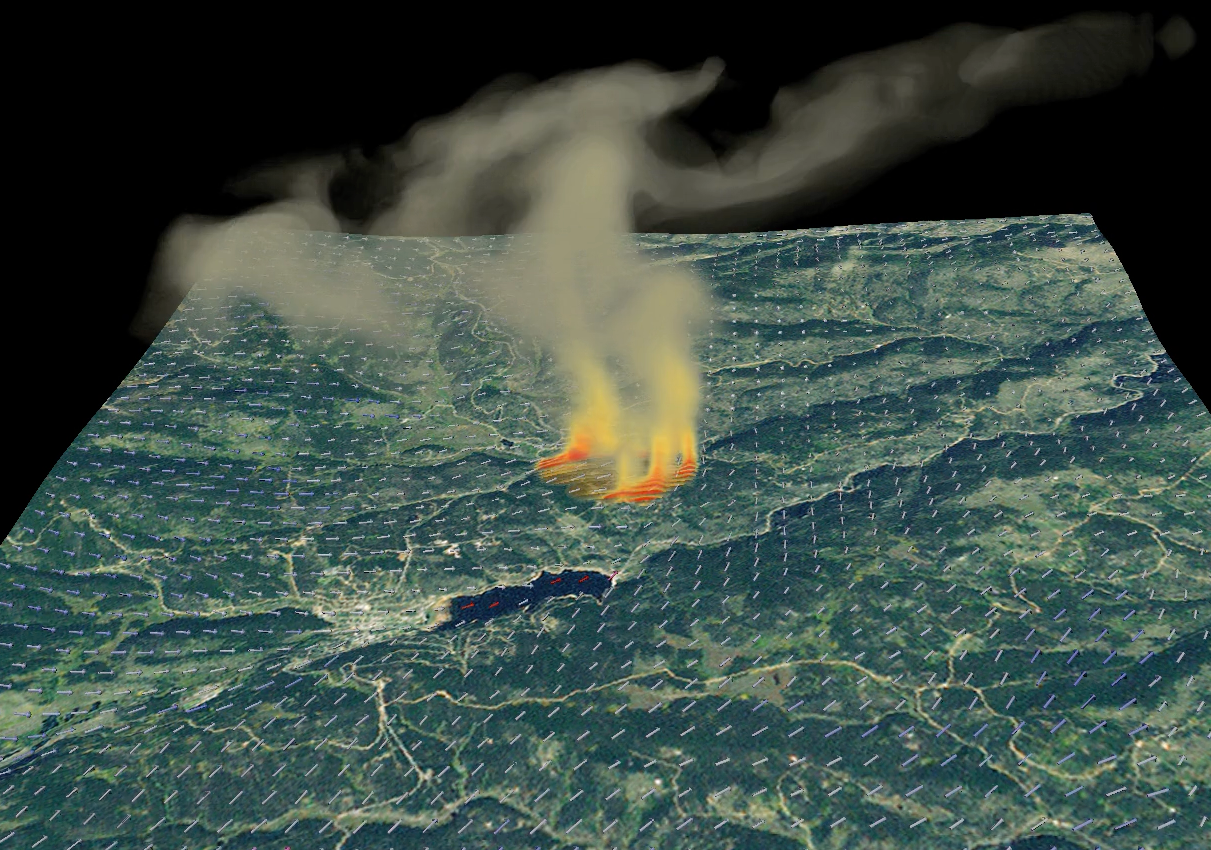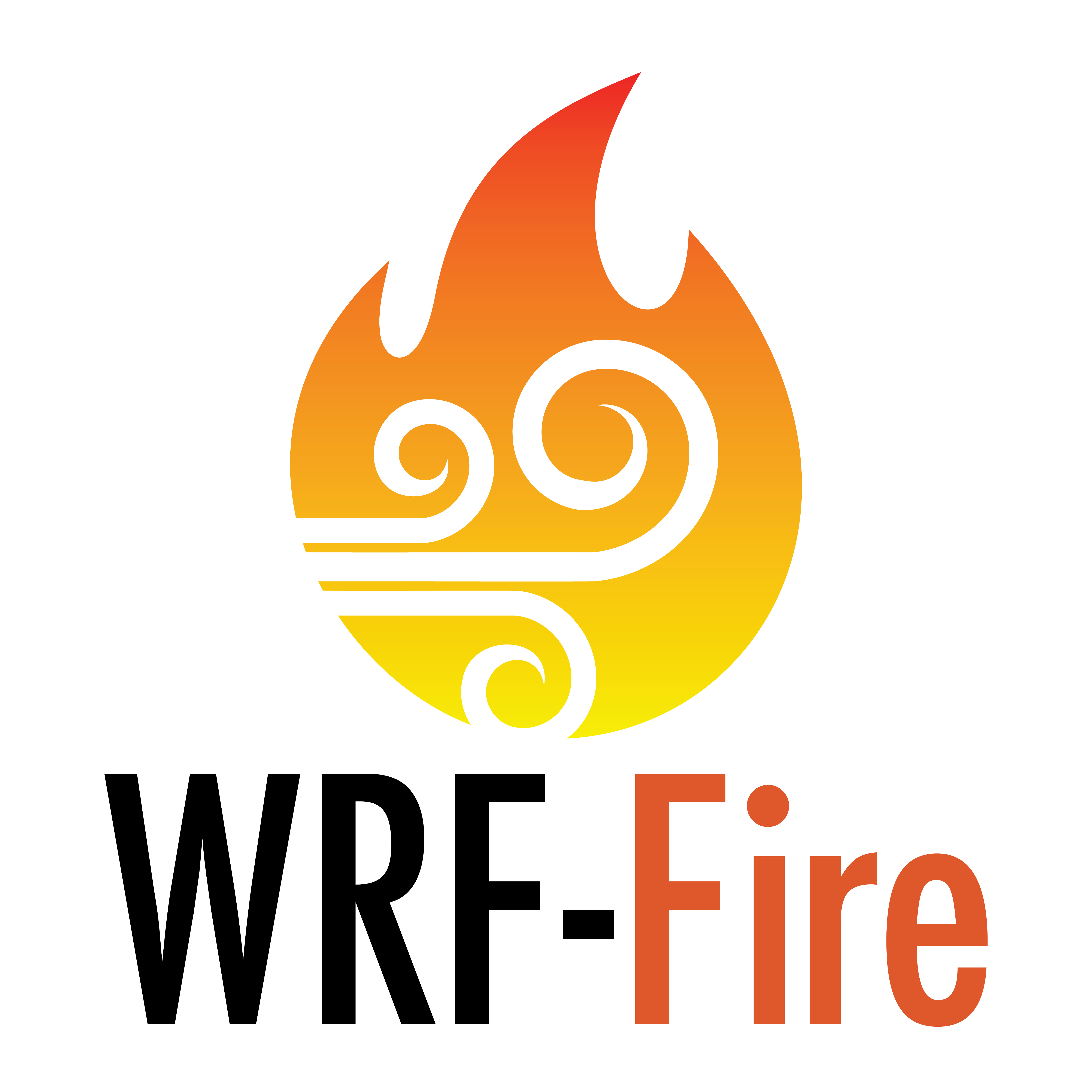WRF-Fire: Wildland Fire Modeling

Wildfire Weather-Behavior Support
WRF-Fire is a physics module within WRF ARW that allows users to model the growth of a wildland fire in response to environmental conditions of terrain slope, fuel characteristics, and atmospheric conditions, and the dynamic feedbacks with the atmosphere. It is implemented as a physics package with two-way coupling between the fire behavior and the atmospheric environment allowing the latent and sensible heat released by the fire to alter the atmosphere surrounding it, i.e. 'create its own weather'. It was first released in Version 3.2 (April 2010).

Crucial decision-support
Over recent decades, wildland fires worldwide have increased in magnitude. Commensurate with their magnitude, the impact of wildland fires on the environment, infrastructure, communities, and health has also increased. Wildland fires result from complex interactions among a multitude of physical processes including weather, combustion, hydrology, and the biosphere. High-resolution, coupled atmosphere wildfire behavior simulations can be indispensable for prediction and risk assessment and thus aid in wildfire preparedness and response. Considering the potential role of wildland fire simulations in decision making, there are needs and opportunities for further enhancement of wildland fire prediction. Improving coupled wildland fire simulations requires a dedicated effort of scientific community from all the relevant disciplines as well as engagement of stakeholders.
Advanced wildland fire prediction system
Recently, significant advances have been made in coupled wildland fire simulations. These advances have been facilitated by advances in computational platforms, weather modeling, data collection and data assimilation. The presentation will discuss how some of these advances are implemented the Weather Research and Forecasting – Fire (WRF-Fire) model. The advances include multiscale modeling, accurate fire front tracking, high-resolution fuel moisture data, firebrand transport, and smoke transport. The impact of these developments will be demonstrate based on simulations of fires observed in Colorado.
Coupling wildfire & atmospheric models
The challenges for wildland fire simulations stem from incomplete knowledge of the processes controlling wildland fire spread, the lack of quality controlled data, and compounded uncertainties due to environmental conditions and fuel characteristics. Considering the potential role of wildland fire simulations in decision making, there are needs and opportunities for further enhancement of wildland fire prediction. Improving coupled wildland fire simulations requires a new rate of spread model that accounts for convective heating through contact with flames and interactions with atmospheric background flow. The new model should be based on extensive observations of wildland fires, complete with quality controlled and standardized data. Such data can then be used for validation of coupled wildland fire models based on a set of well-defined test cases. Achieving this goal will require a dedicated effort of scientific community from all the relevant disciplines as well as engagement of stakeholders.
Contact
Please direct questions/comments about this page to:
Pedro Jimenez Munoz
Proj Scientist III